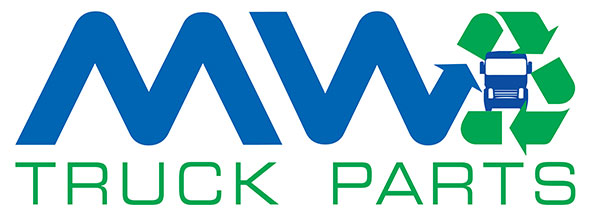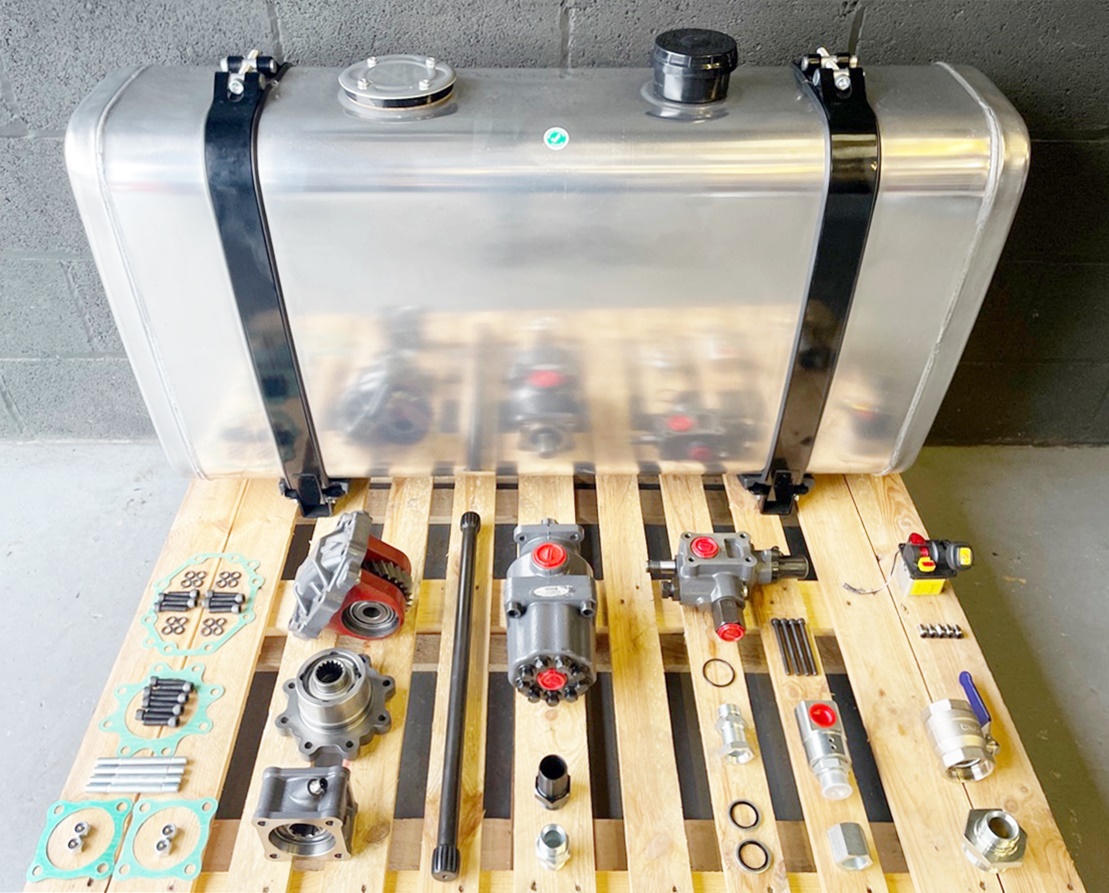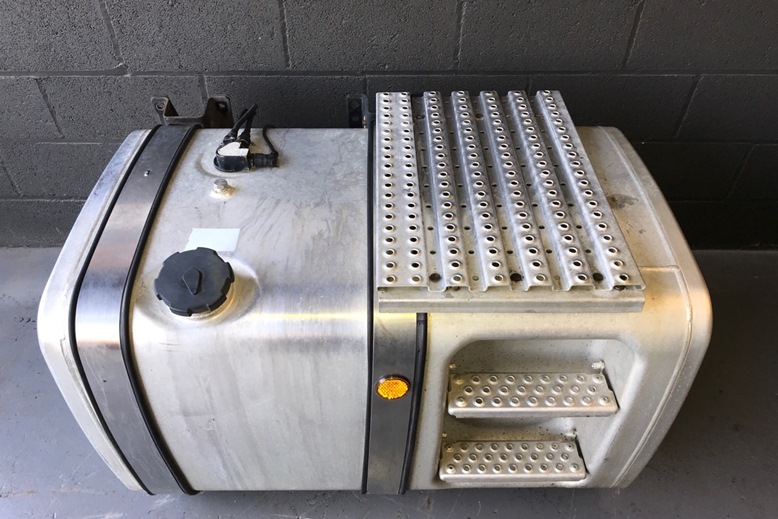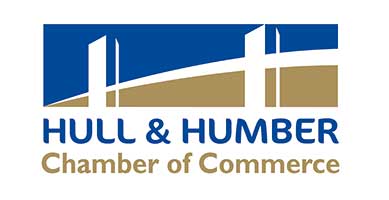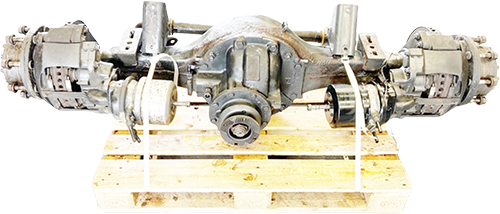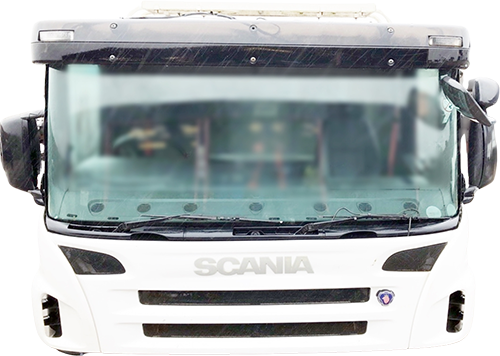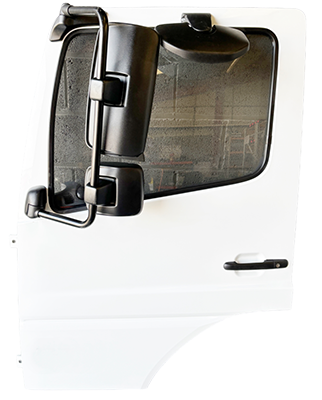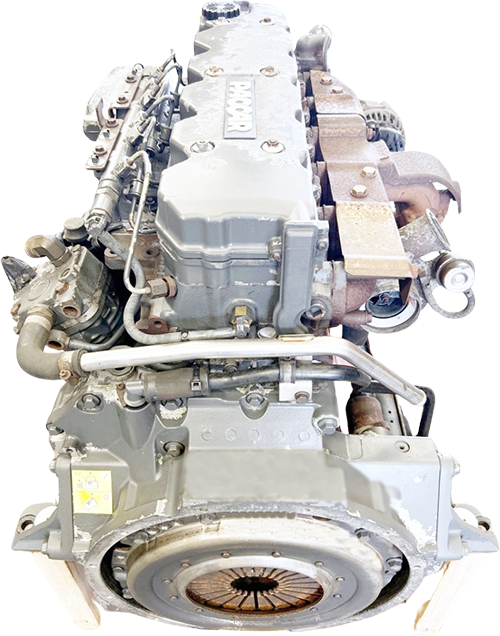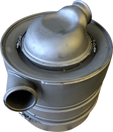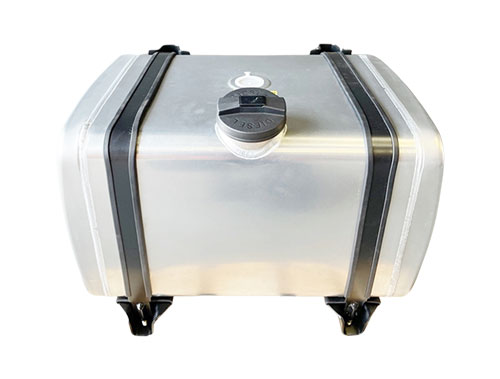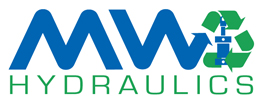A guide to single-line wet kits for Scania hydraulics
—
Scania P, R, G, and S Series models require tipping hydraulics matched to GR and GRS gearbox configurations, spanning manual and Opticruise transmission variants.
Two tank configurations suit different chassis requirements: side-mounted 200-litre units and rear cabin 190-litre alternatives.
Products in this guide:
- Hydraulic Wet Kit Tipping Trailer Scania P R G S Series Euro 3 4 5 6
- Hydraulic Wet Kit Tipping Trailer for Scania P R G S Series Euro 3 4 5 6
Side-mounted configurations
Chassis-rail mounting positions the 200-litre aluminium tank at 38cm width, 75cm height, and 75cm depth before fixtures. Low mounting maintains the centre of gravity while preserving rear frame access for coupling equipment.
Two return paths handle oil flow back to the tank. One path connects at the directional valve plate using 1″ BSP female threads, while the other routes via the upper rear adapter at 1½” BSP male. Pump suction draws from the lower rear port at 2″ BSP male.
Rear cabin configurations
Behind-cab placement accommodates 190-litre aluminium tanks measuring 110cm wide, 65cm tall, and 32cm deep without fixtures. The wider, shorter profile fits spaces where height clearance restricts side mounting.
Return line arrangement differs here. One line still feeds the directional valve plate at 1″ BSP female, but the second now enters at a side-positioned upper adapter at 1½” BSP male rather than rear-mounted.
Internal filtration uses 10-micron elements rather than coarser grades, trapping smaller particles before they reach hydraulic components. Suction ports remain at 2″ BSP male regardless of tank position.
Pump and valve architecture
Nine-piston assemblies deliver 85 litres per 1000 engine revolutions at 250 bar continuous pressure, with 350 bar peaks handled across bidirectional operation. Rotation reverses for raise and lower functions without changing drive direction, limited to 1300 RPM maximum.
Feed ports accept 1¼” BSP connections, while discharge runs at 1″ BSP with integrated hose tails. Directional control valves match 140 litres per 1000 RPM flow at 180 bar working pressure and 230 bar maximum, using normally-closed solenoid operation.
PTO configuration and control
Rear-mounted PTO units couple to GR and GRS gearboxes at direct 1:1 drive ratios with 245 Nm torque limits. Pneumatic actuation suits stationary engagement typical in tipping work rather than dynamic coupling.
Control assemblies integrate PTO engagement with valve direction switching using dual air circuits operating between 5 and 10 bar pressure. Separate ports for raising and lowering actions provide independent circuit control on a 24-volt electrical supply.
Connection hardware
Rotary swivel couplings at 1″ BSP handle 90-degree trailer cylinder connections, while 2″ BSP female ball valves isolate circuits for servicing. Adapters step down from 2″ BSP to 1½” BSP male threads for standardised hydraulic plumbing.
Read this article next: Comparing tipping wet kits: Volvo/Renault vs DAF/IVECO/MAN






